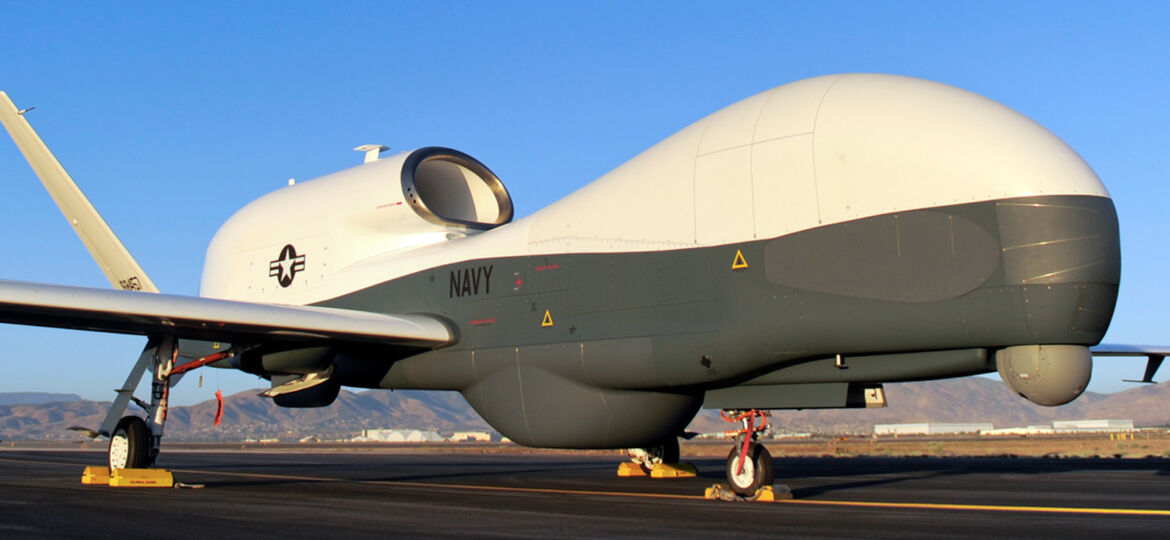
WHY THIS MATTERS IN BRIEF
When you look across the spectrum of military developments it is clear that nation states are now committed to creating fully autonomous military platforms, the only question left to answer is when will they make their own “Kill” decisions.
The time when the US deploys an entire squadron that has no pilots in the cockpit has finally arrived. Following hot on the heels of a series of high profile announcements that include the launch of Americas first fully autonomous warship and 600ft, autonomous-capable $4.4Bn stealth destroyer, as well plans to turn aircraft carriers into drone factories and develop new supersonic submarines that control swarms of autonomous drones it is clear that the future of warfare is autonomous – and intelligent.
This week Rear Admiral DeWolfe Miller, the US Navy’s director of Air Warfare upped the ante again by announcing that the US Navy will stand up its first unmanned-only aviation squadron later this week at a ceremony that will take place Friday.
The catchily titled “Unmanned Patrol Squadron”, which can be abbreviated to make it sound like a popular parcel deliver service – who also happens to use drones, but that we should point out are in no way related to this UPS division, will operate out of Naval Air Station Jacksonville, Florida and will see Northrop Grumman MQ-4C Triton drones rub shoulder with Jacksonvilles manned Boeing P-8A Poseidon squadrons.
The new wing, which has been given the handle “VUP-19” will consist of only unmanned aircraft – a first for the Navy, and will fall under Patrol and Reconnaissance Wing 11 which is led by Commander Benjamin Stinespring and will begin the long process of preparing for early operational capability and a first deployment to the US 7th Fleet in 2018.
At the moment though the squadron doesn’t have any air vehicles but it will receive its first batch of MQ-4C Tritons in late 2017. In the mean time 130 squadron members who will support the new wing have already begun rotating through the Naval Air Station at Patuxent River in Maryland to train with the drone test pilots that are stationed there and this coming January a Triton Mission Systems Trainer will arrive in Jacksonville to help train the air vehicle operators.
In addition to training, the VUP-19 support crews will be tasked with collaborating with their P-8 counterparts to co-develop tactics, techniques and procedures for operating the two maritime patrol and reconnaissance aircraft together.
“How are we going to work together, man and machine teaming, for anti-submarine warfare? How are we going to get the information that’s going to be provided by a persistent long-range airplane with all sorts of sensors?” said Miller, “who maintains the working relationships? How do we get information and distribute it to the folks that need it? How do we truly operationalize the Triton fleet? These are all questions we need to answer.”
Miller said the Triton drone operators will have a good head start on these questions thanks to their understanding of what capabilities the MQ-4C brings to the fleet, as well as their experience from the lessons they learned when they were training with the autonomous Northrop Grumman MQ-8 Fire Scout helicopter and Black Hawk helicopter MH-60 teams whose operators are grouped together in a common squadron, unlike the currently separate command structures for the MQ-4C and its manned equivalents.
“We know the strengths of each of the platforms – what Triton brings is that persistence, and the reach of its sensors is significant such that it can cue the P-8. Hey, go here. That sort of stuff,” Miller said.
“Or, at times where it is available, the P-8 may not be. P-8s don’t fly for 24 hours at a time, so when you establish an orbit with Triton it’s more persistent, and again the reach of the sensors is quite a bit more extensive.”
Referencing the OODA loop – which stands for “Observing, Orienting, Deciding and Acting,” Miller said the MQ-4C Triton would cover much of the first two and serve as “a large contributor to that situational awareness,” allowing the P-8 crews to focus on the latter two.
The squadron stands up this week and will begin operating Tritons in the continental US during early training and tactics development and by the time early operational capability rolls around in 2018, the squadron will be flying the air vehicles in and around Guam, an isolated island which belongs to the US. The operators themselves will remain in Jacksonville at a vehicle control and information processing center, and a small detachment of maintainers will deploy forward to keep the air vehicles up and running.
“It’s just exciting – we talk about man-machine teaming, we talk about our unmanned vehicles, and now here’s a milestone event where we’re standing up a squadron and it’s becoming a reality,” concluded Miller.
“So I kind of get giddy over it because, it’s interesting, I worked in N2/N6 as my first flag job four years ago when Triton was just getting unveiled at Northrop Grumman, and now to be the resource sponsor four years later as we’re standing up the first squadron and getting ready to march towards deployment is pretty fulfilling.”






















[…] from autonomous-capable destroyers and fully autonomous sub hunters, harbour patrol boats, drone squadrons and underwater drone […]